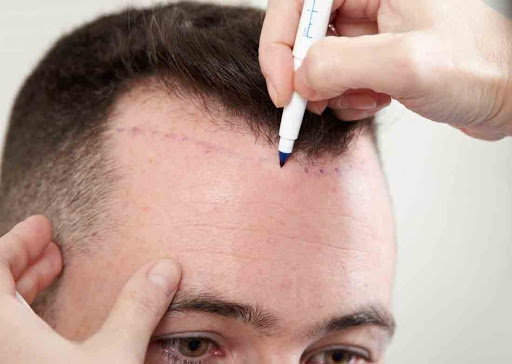Hair loss is a condition that has impacted millions throughout history and those with baldness have had many different solutions available to them. The earliest of these solutions was the wig where hair is sewn into a cloth and placed atop of the balding area of the head. Sometimes accompanied by adhesive their methods are effective but require maintenance and have no guarantee of staying on. Hair transplants were originally developed in the 1950’s with the invention of the hair plug procedure. This original procedure had many downfalls and is extremely different from modern day hair transplants. The main concept that hair transplants follow is the extraction of healthy hair follicles and the implantation of those follicles into regions of thinning or balding hair. This gives the appearance of natural hair as it comes from the person’s own hair. The end result is hair that is real and able to grow, undergo dying, and even be cut and styled. The great results of this new methodology of the procedure has made it quite popular and a great option for those with male or female pattern baldness. Below is a description of the different processes in a hair transplant and how they work.
Preparation
Hair in its most basic sense is a protein that is created into filaments by structures known as hair follicles. Hair follicles are embedded throughout the skin and are what give rise to normal hair. Different regions of the body have follicles of varying sizes and correlates with the thickness of the hair produced. For a hair transplant there are 4 main steps which include preparation, extraction, implantation, and postoperative care. For the preparation stage a licensed physician will assess the baldness as well as the health of the hair and hair follicles as a whole. Based on their assessment they will provide the best way to achieve the patients goals for the operation. With the patient in agreement the physician will start by shaving a portion of the hair on the back of the head. This is the region that will be harvested for the follicles. The hairs must be short in order for the tools to work correctly and extract the entire follicle without damaging the structure.
Donor Hair
With the hair in the region where follicles will be harvested shaven, the procedure begins first by applying a local anesthetic. Often a needle is used to administer the anesthetic below the skin and this will reduce the feeling and sensation in this area while the operation is being done. With the haircut to a short length and anesthetic applied the surgeon will begin excising healthy follicles from the region. This is accomplished with a metal cylinderr punch that is typically serrated. The hair is placed in the middle of the tiny cylinder and the surgeon creates the incision around the base of the hair. Once the serration is done forceps are utilized to pull the full follicle unit out of the scalp and these units are placed into a storage solution to keep the follicle alive and healthy. Another method known as strip excision involves the excision of a strip of the scalp and the dissection of this scalt to obtain follicular units. In both cases the end result is follicle units that have been removed and placed into a storage solution where they are kept till it is time for implantation.
Transplanting
With the donor hair harvested it becomes time to transplant the follicle unity into the areas of thinning or balding hair. Before implanting the donor follicles another round of local anesthetic is used on the scalp areas that are balding to limit the sensation and pain the patient may feel. Once the anesthetic begins to work it is time to transplant the fresh donor follicles. To do this many tiny incisions are made into the scalp with a scalpel. Once the incision is made the donor follicle unit that has been put into the storage solution is obtained and placed within the incision site. This is done for each and every follicle that is to be transplanted. This can be a long process but as the saying goes, good things come to those that wait.
Postoperation
Postoperative healing is a critical time of healing for the new follicles and the proper care set by the physician is of utmost importance to avoid any potential issues and to ensure you get the best results possible. Post operative care including regular gentle cleansing of the operated areas, no smoking, and no hat wearing for the first few weeks.
Overall hair transplants work fairly simply as it is relocating healthy hair into regions that are balding or thinning. Since the hair utilized in the procedure is the patient’s own hair it will look natural and will have an extremely low likelihood of tissue rejection. With the knowledge of how hair transplants work patients are able to make an educated and informed decision as to whether the procedure is right for them.


